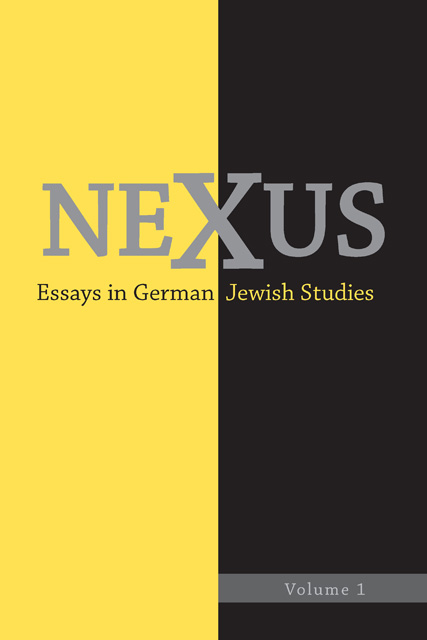Disfigured Memory: The Reshaping of Holocaust Symbols in Yad Vashem and the Jewish Museum in Berlin
Published online by Cambridge University Press: 10 February 2023
Summary
The new Yad Vashem: The Holocaust Martyrs’ and Heroes’ Remembrance Authority in Jerusalem (2005) and the Jewish Museum in Berlin (2001) employ aesthetically innovative strategies in certain exhibits and memorials, such as Moshe Safdie’s Memorial to the Deportees, the video art display String by Uri Tzaig, and the video sculpture Menora by Michael Bielicky. At the same time, these exhibits and memorial draw on symbols often found in artistic depictions of the Holocaust: the deportation car, the Torah, and the menorah, respectively. This essay examines how The Memorial to the Deportees, String, and Menora initially draw on conventional Holocaust symbols only to then destabilize or ironicize them and finally, through the aesthetic technique of disfiguration, to evoke a sense of the sacred.
WALKING THROUGH THE JEWISH MUSEUM in Berlin and the new Yad Vashem in Jerusalem, the visitor may be struck by the aesthetic innovation of video installations and displays that often rely on postmodern aesthetics and suggest new, creative ways of remembering. Contemporary Holocaust exhibits present a unique challenge to museum planners: they are called upon to tell the story of the Holocaust in accessible and engaging terms while preserving a sense of the sanctity that the Holocaust has acquired in contemporary memory culture. Given both the emotional power of the Holocaust as a subject for representation and also the danger of overrepresentation, exhibits increasingly turn to startling visual techniques that not only engage the viewer but evoke a sense of sanctity as well. This essay will first contextualize the tropes and symbols used in selected Holocaust exhibits, such as the railway car, the Torah, and the menorah, and then examine the exhibits’ evocation of sacredness through particular aesthetic techniques.
Ethical and aesthetic questions haunt both abstraction and figuration in Holocaust art. Those artists and writers who have been critical of abstraction cite the elevation of formal and aesthetic concerns above humanistic values and the duties of remembrance and communication, and the avoidance of direct emotional or empathetic involvement with the subject matter. For those critical of figuration (representation through figures), in contrast, there are several issues: the overexposure of certain images and symbols to the point where they become icons; the risk of violating the Bilderverbot (taboo on representations) surrounding particular kinds of suffering (such as in the gas chamber); the trivialization/ exploitation of the Holocaust, and the creation of harrowing depictions that alienate the viewer.
- Type
- Chapter
- Information
- Nexus 1Essays in German Jewish Studies, pp. 205 - 226Publisher: Boydell & BrewerPrint publication year: 2011



